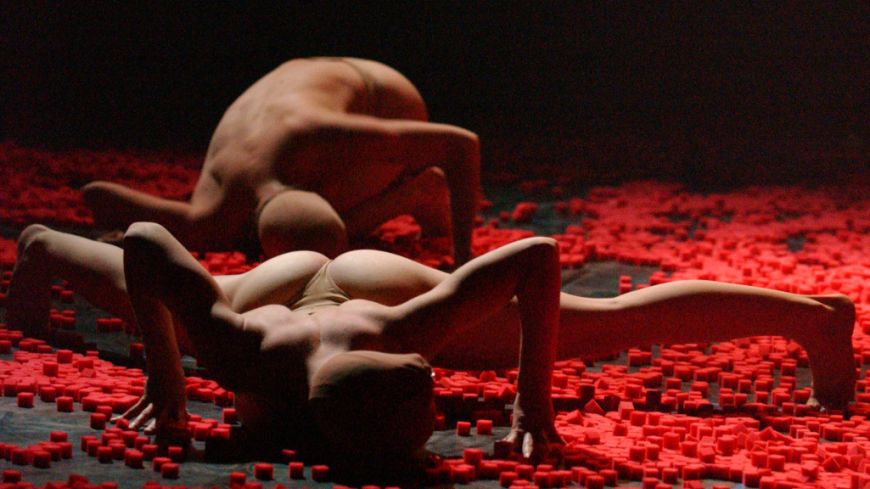
Editta Braun, an influential Austrian choreographer who has been referred to as the ‘Grande Dame of contemporary dance theatre’, has been creating unconventional and unique pieces of visual theatre since forming her company in 1989. The Manipulate Festival continued this evening with her startling and bizarre piece, ‘Luvos’.
Luvos takes you into a strange, future world, visually expressing fears and concerns surrounding issues such as the possible effects of genetic modification and global warming. In this brave new world, such havoc has been wreaked on the human form that it no longer looks or moves in any way that is recognisable human. The rich and fertile earth that humans once inhabited now appears as a barren and unfamiliar landscape, a post-apocalyptic planet with a strange and uncomfortable light through which these new life forms can be glimpsed, writhing on the surface.
The piece began with the theatre in complete blackness, the echoing sound of electronic drums lasting long enough to create a sense of disorientation and unease. As the light slowly began to glow dimly, as if to herald a bleak yet stark dawn, it was just possible to make out the shape of limbs protruding through heaps of bright red, apparently spongy, cubes. It was possible to discern five separate sets of very pale limbs but not, for instance, whether they were arms or legs, male or female.
The five dancers all appeared to be naked, with their hair covered in pale stockings that made it impossible to tell one from another. Their faces were never seen and not enough of their torsos could ever be glimpsed for long enough to discern their gender. For almost all of the performance, the dancers made peculiar and disconcerting shapes, either separately or at times coming together to create what looked like a many-limbed new species that had yet to be defined.
The powerful and eerie sound track by electronic composer Thierry Zaboitzeff, was in complete harmony with the alien vision we were witnessing – not an accompaniment to, but a part of this new structural landscape. At times the deep bass notes were so intense I could feel them echoing in my chest. The lighting was also a vital component, constructing an other-worldly and unfamiliar glow through which to view this uneasy spectacle. Blackouts would cut in unexpectedly, the light suddenly gleaming once more to reveal the dancers in a different inhuman pose that were snapshots of nauseas beauty and weirdness.
Humour mingled with pathos to suggest a playful social criticism: this was a warning not a prediction. Like other pieces presented at this festival, it epitomised the value of visual theatre, that so often a ‘picture’ can say more than a thousand words.

